
Quick Summary: Only 34 % of organizational change initiatives succeed, according to Gartner (2024). The root cause isn’t poor planning—it’s the inability to sustain alignment, trust, and readiness across people, process, and purpose. This article explores how predictive intelligence redefines Organizational Change Management (OCM) by surfacing early-warning signals, decoding stakeholder sentiment, and enabling proactive leadership. You’ll discover how forward-looking organizations use data-driven foresight and change readiness analytics to:
• Anticipate resistance before it surfaces
• Measure change readiness in real time
• Balance empathy with evidence-based governance
• Build adaptive ecosystems that learn from every transformation
In short, this is your roadmap to turning transformation risk into measurable, predictive readiness.
What’s Driving the Urgency for Predictive Change Readiness in OCM?
The pace of disruption has compressed the half-life of every strategy. New technologies, hybrid work models, and global uncertainty have forced leaders to orchestrate constant adaptation. Yet transformation success remains elusive—even in organizations that invest heavily in predictive OCM frameworks, not because businesses can’t design change, but because they can’t sustain it.
A 2024 Gartner study found that only 34% of change initiatives are clearly successful, citing unclear ownership, stakeholder overload, and poor communication as key inhibitors. The paradox is clear: while the need for change has never been greater, the organizational capacity to absorb it has never been lower.
This is where Organizational Change Management becomes indispensable. OCM provides structure, communication, and behavioral alignment that turn strategic intent into measurable outcomes. But in today’s landscape, traditional OCM is no longer enough. Leaders need foresight, not just frameworks.
Beyond Traditional Models: How Is Organizational Change Management Evolving into Predictive Intelligence?
 For decades, models like Kotter’s 8-Step Process and ADKAR have served as foundations for structured change. But even the most disciplined execution falters when leaders can’t see early signals of resistance or engagement fatigue.
For decades, models like Kotter’s 8-Step Process and ADKAR have served as foundations for structured change. But even the most disciplined execution falters when leaders can’t see early signals of resistance or engagement fatigue.
This evolution combines behavioral insight with AI-driven analysis, enabling leaders to visualize readiness patterns and predict adoption velocity and ability to detect and interpret subtle, forward-looking indicators of change readiness, adoption velocity, and sentiment drift. Predictive intelligence systems now provide this capability by aggregating behavioral, project, and communication data to show where alignment is slipping before performance does.
This shift from static plans to signal-driven adaptability marks a defining transformation in OCM. It’s not just about managing resistance—it’s about anticipating it.
What Is the Predictive Advantage in Organizational Change Management—and How Does It Turn Risk into Readiness?
When integrated into project environments, predictive intelligence allows organizations to measure change readiness in real time. It flags where sponsorship is weak, where team sentiment dips, or where project pace deviates from baselines. Instead of reacting to post-launch issues, leaders can intervene early—with empathy and evidence.
This capability transforms OCM from a governance function into a continuous feedback system that builds organizational muscle memory for transformation.
The first step toward predictive change maturity is understanding your organization’s current baseline—its readiness, friction points, and unseen cultural signals.
Take a TrueProject Snapshot → get an instant read on early-warning signals in change readiness, stakeholder sentiment, and adoption confidence before they escalate.
What Role Do Purpose, Process, and People Play in Effective OCM?
Effective OCM doesn’t begin with process—it begins with purpose. Leaders must articulate the why behind change before defining the how. Without shared purpose, communication plans and training programs simply inform—they don’t inspire.
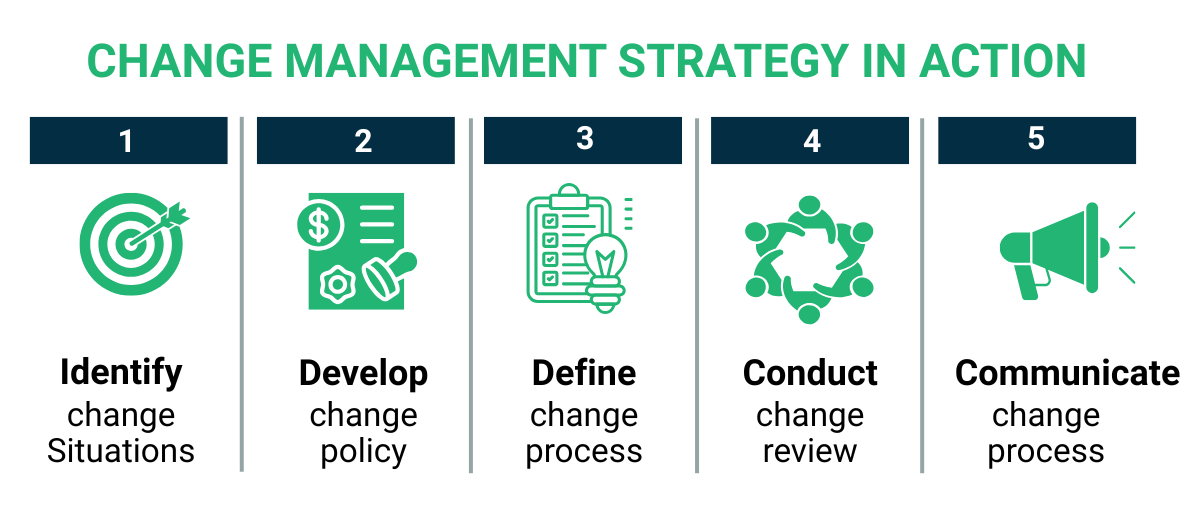
According to Deloitte (2024), organizations with clear change purpose achieve 29% higher employee alignment and 40% greater transformation ROI. Purpose alignment ensures every department—from technology to finance—understands how their contribution connects to the enterprise vision.
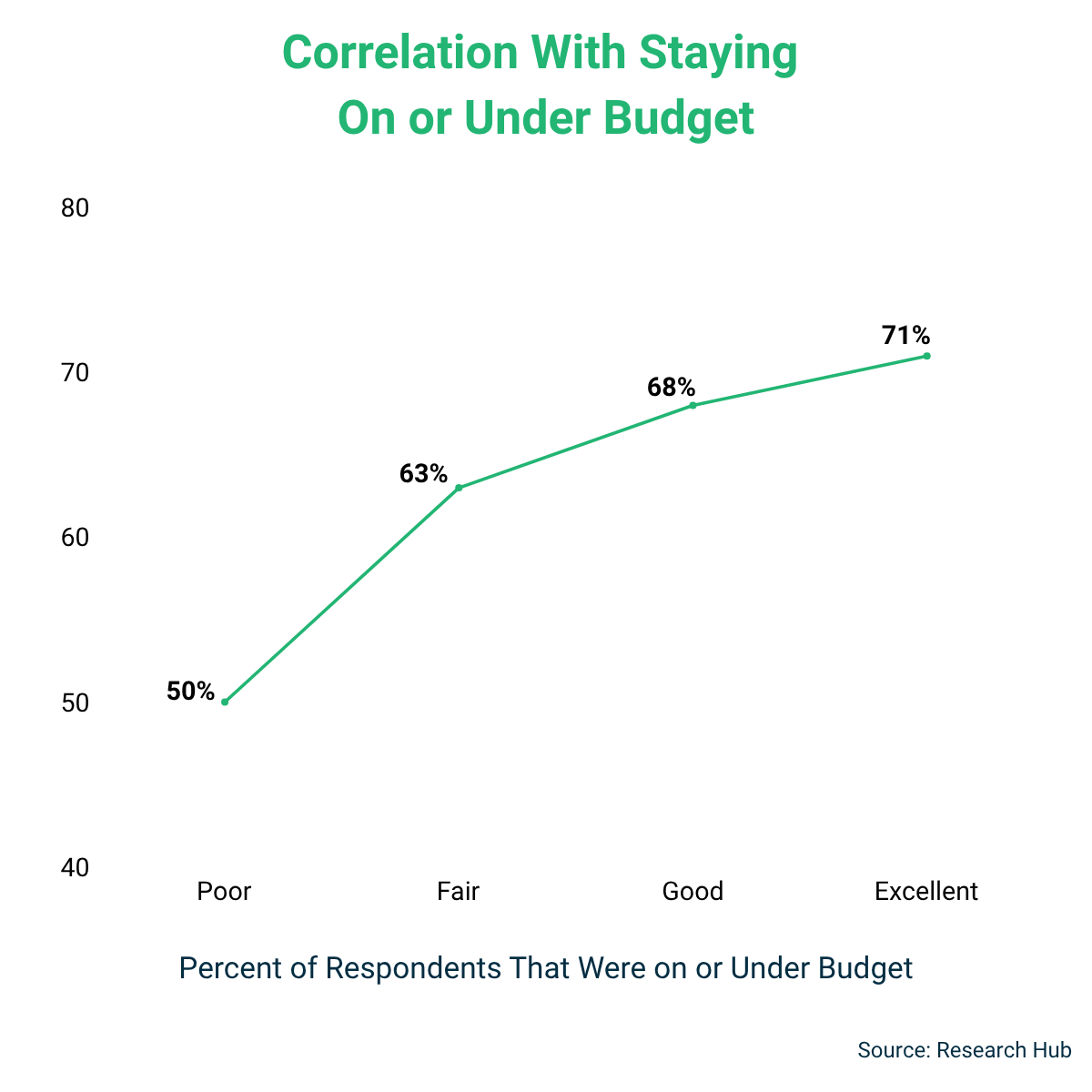 Next, process clarity provides the scaffolding for consistent execution. Mature organizations standardize governance, communication cadence, and feedback mechanisms so change is both visible and verifiable. Finally, people enablement ensures stakeholders at every level have the capability, motivation, and support to succeed.
Next, process clarity provides the scaffolding for consistent execution. Mature organizations standardize governance, communication cadence, and feedback mechanisms so change is both visible and verifiable. Finally, people enablement ensures stakeholders at every level have the capability, motivation, and support to succeed.
When these three dimensions synchronize, transformation becomes scalable and sustainable.
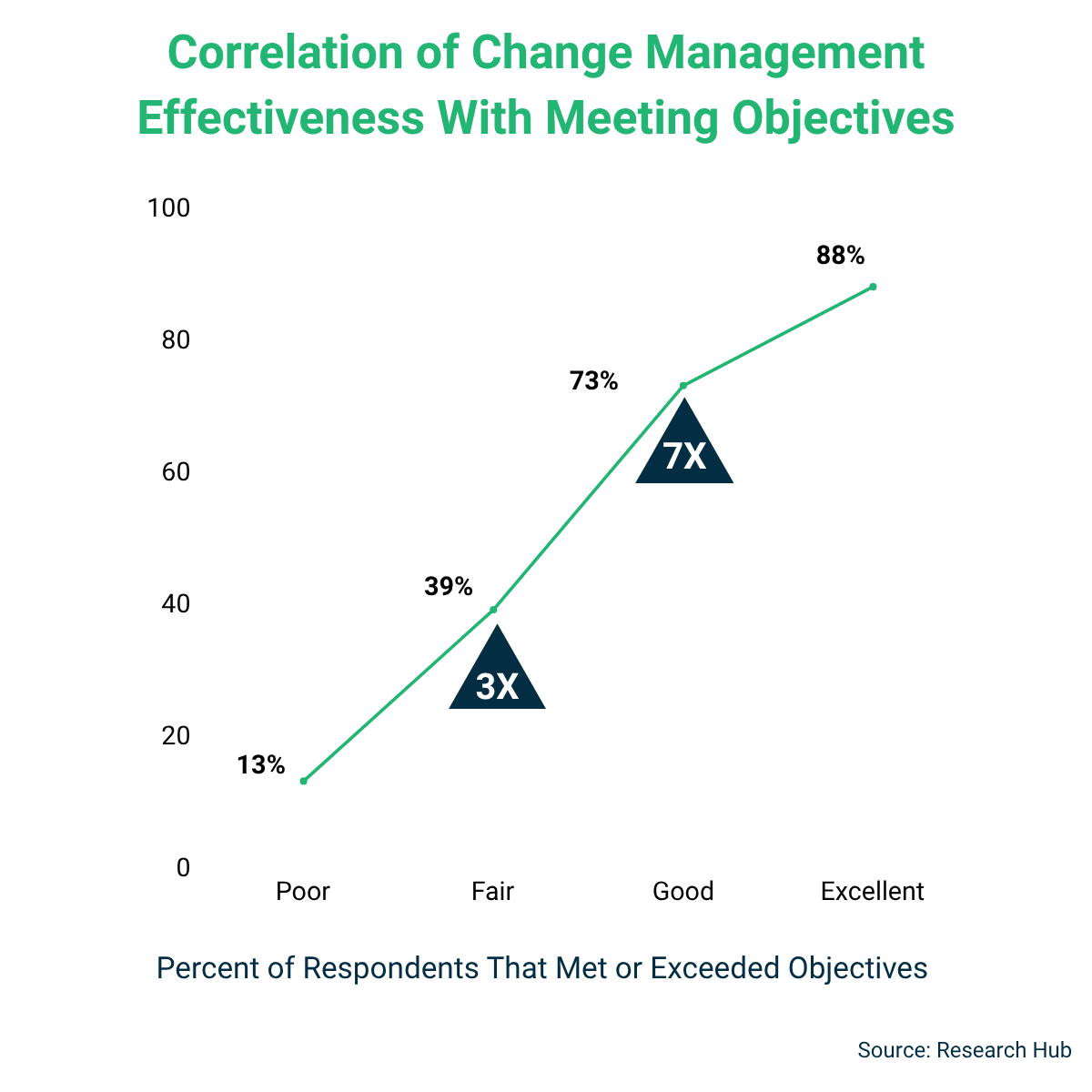 How Do Modern Predictive Intelligence–Driven Change Ecosystems Build Alignment and Resilience?
How Do Modern Predictive Intelligence–Driven Change Ecosystems Build Alignment and Resilience?
Modern OCM frameworks increasingly resemble what Gartner calls “open-source change ecosystems”—adaptive, transparent environments where participation, not hierarchy, drives momentum. Rather than directing change from the top, high-performing organizations involve employees early, allow them to shape implementation plans, and foster open dialogue about risks and solutions. This democratized approach accelerates alignment and makes change more resilient to disruption.
How Can Predictive Signals Strengthen Every Dimension of OCM?
Predictive intelligence strengthens each dimension of OCM by transforming static inputs into actionable signals:
• Purpose alignment → Sentiment monitoring: Are teams emotionally connected to the “why”? Predictive tools analyze tone, engagement, and consistency across updates to detect early signs of drift.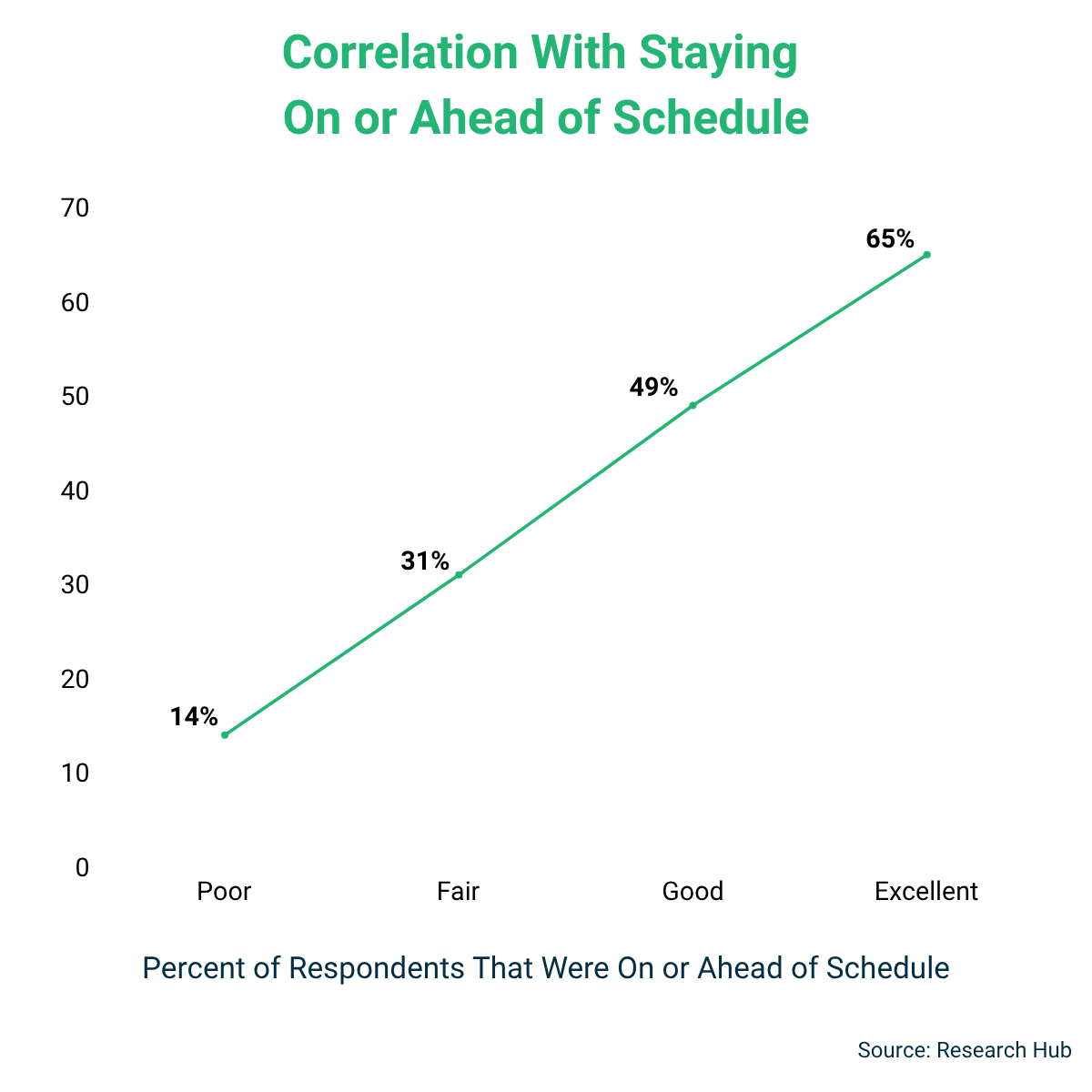
• Process governance → Variance detection: Predictive dashboards highlight schedule slippage or workflow stagnation, revealing friction that leadership may overlook.
• People enablement → Readiness mapping: AI models assess adoption patterns and confidence scores, enabling leaders to reinforce change capacity where it’s weakest.
This layered architecture creates what Gartner calls “adaptive OCM ecosystems”—systems that sense, interpret, and respond continuously rather than episodically.
Seeing predictive collaboration and signal-driven OCM in action often reframes how leaders approach governance and accountability during transformation.
Request a TrueProject demo → see how predictive intelligence transforms organizational change management into a measurable, real-time capability that drives confident transformation.
What Makes Organizational Change Management Implementation Successful in Real Project Environments?
Organizational Change Management fails most often in the space between strategy and execution. Leaders define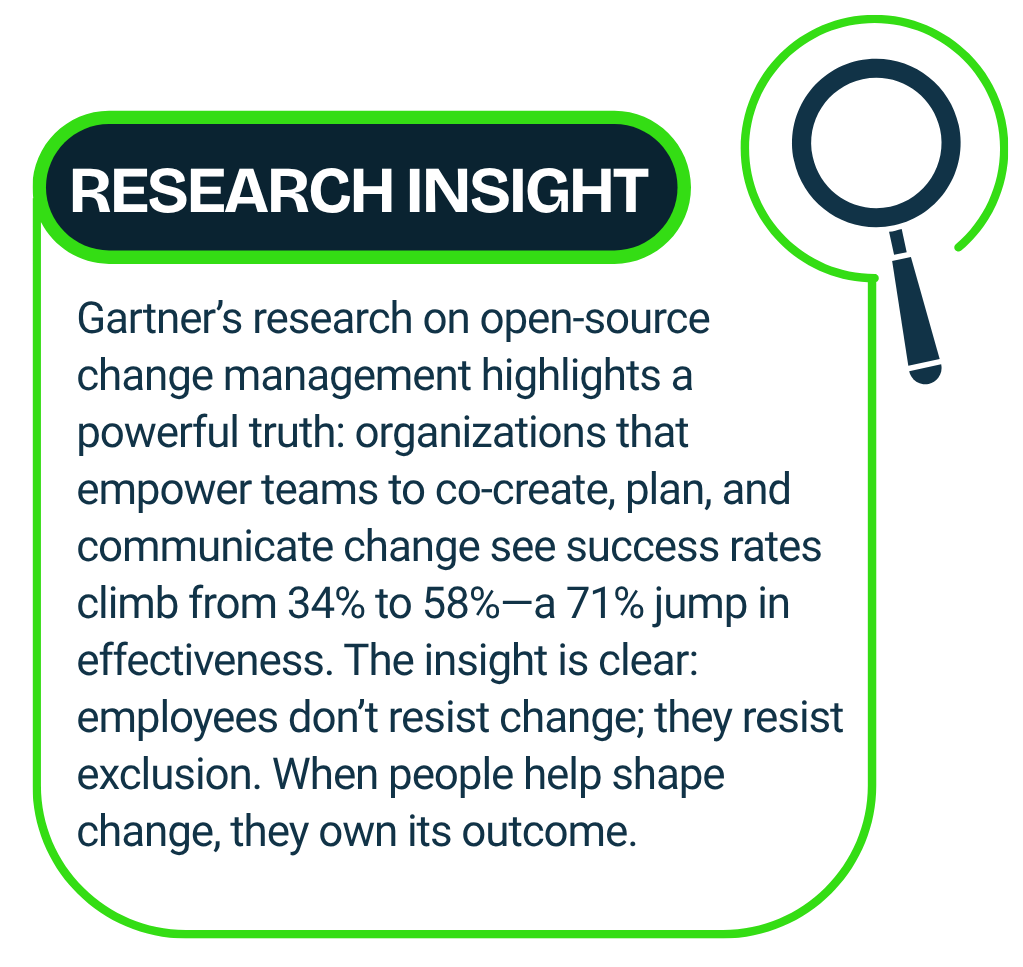 the destination but rarely map the behavioral journey required to get there. Implementation succeeds when it combines structure, empathy, and insight—balancing governance discipline with predictive awareness.
the destination but rarely map the behavioral journey required to get there. Implementation succeeds when it combines structure, empathy, and insight—balancing governance discipline with predictive awareness.
According to the Harvard Business Review (2024), only 42 % of change leaders feel their organizations measure adoption effectively, which means most transformations operate with limited feedback on whether change is truly taking hold. Implementation, therefore, must be designed as a closed-loop system: one that listens, learns, and adjusts continuously.
Step 1: Baseline Your Organization’s Change Readiness
Every transformation begins with understanding current reality—how ready, resistant, or resilient your teams are. Predictive tools can identify early gaps by analyzing historical project outcomes, sentiment trends, and communication patterns.
By measuring baseline indicators—like decision latency, stakeholder responsiveness, or alignment drift—leaders can pinpoint where to focus readiness interventions before the first milestone is even announced.
Step 2: Embed Change into Everyday Workflows
Change isn’t something that happens outside daily routines—it must be built into them. Integrating OCM activities (communications, feedback, learning loops) within existing systems like TrueProject ensures change doesn’t feel like an additional task.
Predictive intelligence amplifies this integration by tracking adoption velocity and highlighting teams that deviate from engagement norms. If collaboration frequency drops or updates become reactive, leaders know exactly where to intervene.
Step 3: Institutionalize Feedback and Adaptation
OCM is a living process. As projects progress, predictive platforms surface real-time patterns—identifying when stakeholder sentiment begins to wane, when risks cluster, or when team confidence falls below thresholds. This data-driven insight allows change managers to recalibrate messaging, resource allocation, or process cadence before disruptions scale.
In other words, predictive OCM transforms feedback into foresight—turning every project milestone into a learning checkpoint.
If your organization is beginning its change journey or struggling to sustain transformation momentum, the right first step is conversation—guided by data, not assumption.
Schedule a discussion →explore how your organization can baseline change readiness, uncover resistance patterns, and build a predictive roadmap for sustainable transformation.
Why Do Even Well-Designed Organizational Change Management Programs Fail?
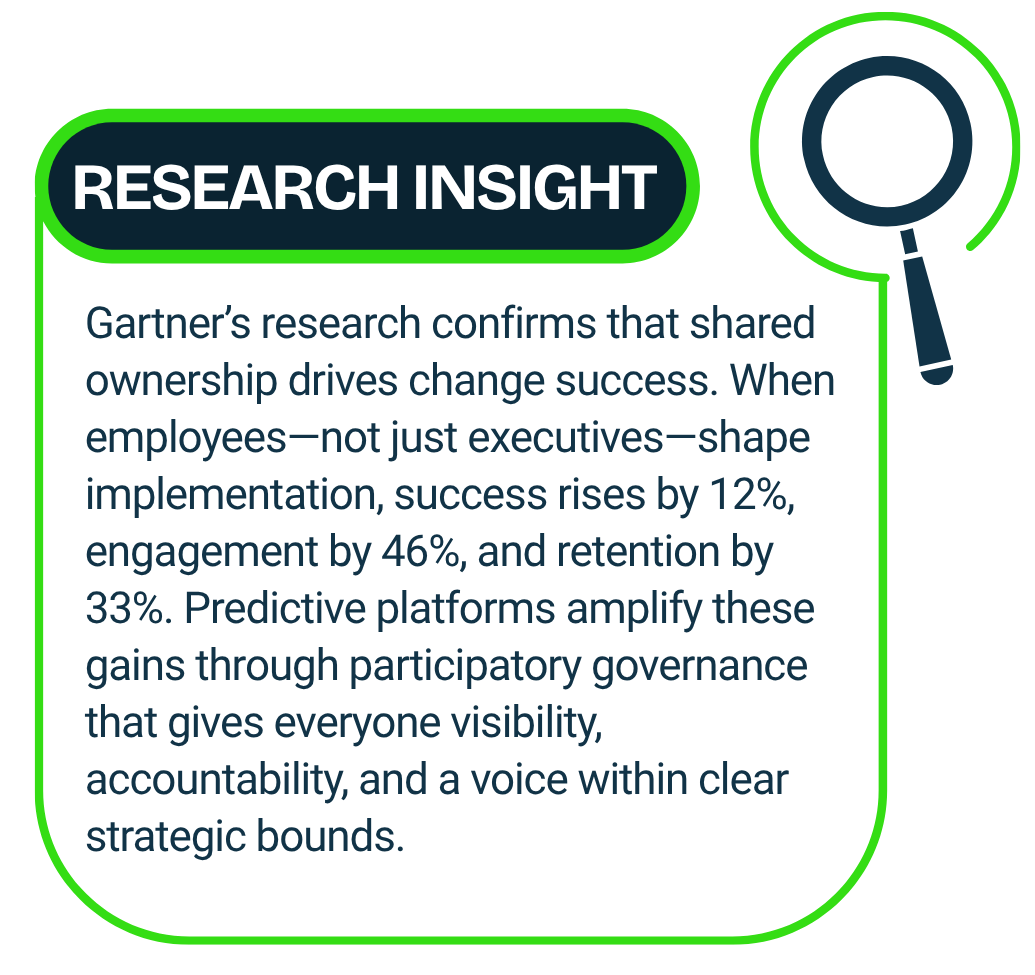 Many change initiatives collapse not from poor intent, but from invisible inhibitors—the frictions that accumulate beneath the surface of communication and governance. These fall broadly into three categories: cultural, structural, and cognitive.
Many change initiatives collapse not from poor intent, but from invisible inhibitors—the frictions that accumulate beneath the surface of communication and governance. These fall broadly into three categories: cultural, structural, and cognitive.
- Cultural resistance: People fear loss of control or relevance. Without transparent dialogue, resistance manifests as silent disengagement rather than overt pushback.
- Structural misalignment: Change teams operate in silos while governance remains fragmented, leading to inconsistent accountability.
- Cognitive overload: Employees facing multiple concurrent initiatives experience change fatigue and information saturation.
These challenges share one trait: they’re rarely visible until outcomes are already compromised.
How Does Predictive Intelligence Make the Invisible Visible in Change Management?
Predictive intelligence brings transparency and timing to the forefront of OCM. It converts qualitative signals—like communication tone, meeting cadence, or response lags—into actionable metrics. This allows leaders to distinguish between healthy friction (natural debate) and destructive resistance (eroding trust).
• Cultural layer: Sentiment analysis surfaces early anxiety or confusion, prompting coaching and communication adjustments before disengagement spreads.
• Structural layer: Predictive dashboards reveal bottlenecks or ownership drift in workflows, ensuring accountability stays anchored.
• Cognitive layer: AI models detect participation fatigue or delayed response cycles, helping leaders pace initiatives realistically.
Organizations ready to confront these hidden dynamics often begin by integrating predictive indicators into existing governance frameworks—making every signal count.
Schedule a demo → align your change-management frameworks with predictive signals that uncover unseen resistance and sustain transformation energy.
Can Predictive Intelligence Replace Human Empathy in Organizational Change Leadership?
Never. Change, at its core, is a human journey—driven by belief, emotion, and trust. Predictive intelligence enhances that journey by illuminating what leaders might miss, but empathy remains the currency of influence.
McKinsey (2024) emphasises that organisations combining analytics with empathetic leadership see 2.5× higher success rates in transformation programs. Predictive tools provide the clarity; human leaders provide the conviction.
How Can Change Leaders Combine Empathy with Evidence Using Predictive Intelligence? 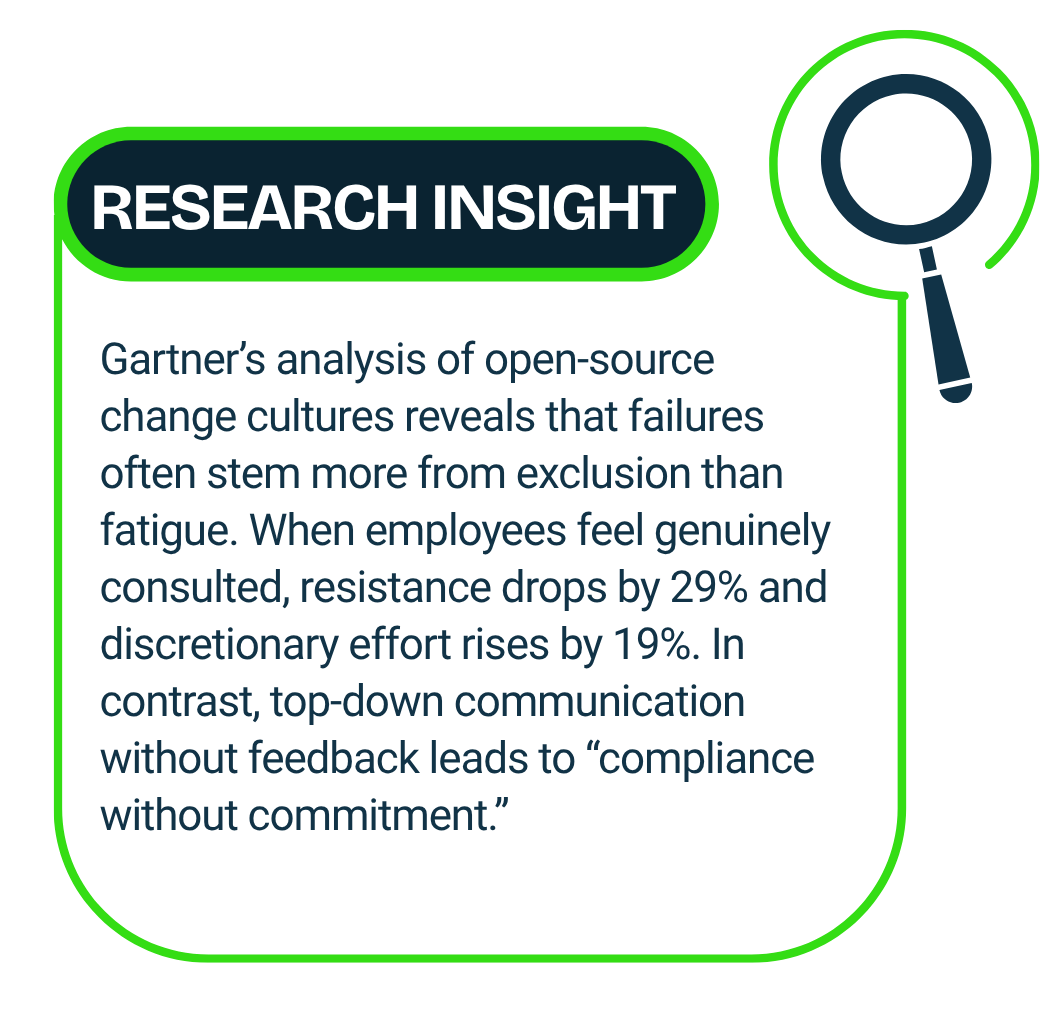
By blending qualitative intuition with quantitative insight, leaders can make decisions that feel fair, timely, and informed. For example:
• When sentiment scores show anxiety in specific departments, leaders can organize listening sessions—not punitive reviews.
• When predictive alerts flag declining engagement, managers can reinforce recognition or workload balance.
This integration transforms leadership from reactive reassurance to proactive trust-building.
How Does Predictive Intelligence Help Elevate Organizational Change Maturity?
Over time, predictive systems create a living memory of how change unfolds—what interventions worked, what timing mattered, and which signals predicted success. This data becomes institutional knowledge that strengthens future initiatives.
At this stage, OCM becomes self-reinforcing. Instead of repeating the same learning curve, organizations evolve with every transformation cycle—because each one leaves behind data-driven insight.
The next evolution of Organizational Change Management lies ahead: one where AI-assisted ecosystems, adaptive governance, and predictive collaboration redefine how organizations evolve with confidence.
How Is Organizational Change Evolving in the Age of Predictive Intelligence?
The next era of Organizational Change Management will be defined not by process adherence but by adaptive intelligence. As organizations embrace continuous transformation, static frameworks are giving way to living systems that learn, anticipate, and self-correct.
Forrester’s 2025 Change Intelligence Forecast projects that enterprises using predictive analytics in change management will cut transformation failure rates by 40 % within three years. This evolution reflects a broader shift—from managing change to engineering adaptability.
Predictive intelligence now functions as the nervous system of modern organizations. It connects data across communication, performance, and sentiment channels, providing a 360° view of how change is progressing in real time. Instead of reacting to issues after impact, leaders receive early-warning insights: where engagement is dropping, where pace is slipping, and where confidence needs rebuilding.
What Does Adaptive Change Management Look Like with Predictive Intelligence in Practice?
Adaptive change management combines human agility with machine foresight. Future-ready organizations will rely on AI-assisted collaboration ecosystems that translate vast project and cultural data into clear, actionable recommendations.
Imagine a system that not only identifies low-adoption signals but also suggests corrective plays—“run a stakeholder alignment session,” “simplify workflow handoffs,” or “issue a revised communications brief.” Predictive intelligence does precisely that—turning insight into guidance.
When coupled with behavioral data, these systems can even model change-fatigue trajectories, forecasting when teams are likely to experience burnout and suggesting preemptive interventions. The result: a workplace that senses, adjusts, and sustains momentum on its own.
How Can Predictive Governance Future-Proof Organizational Transformation?
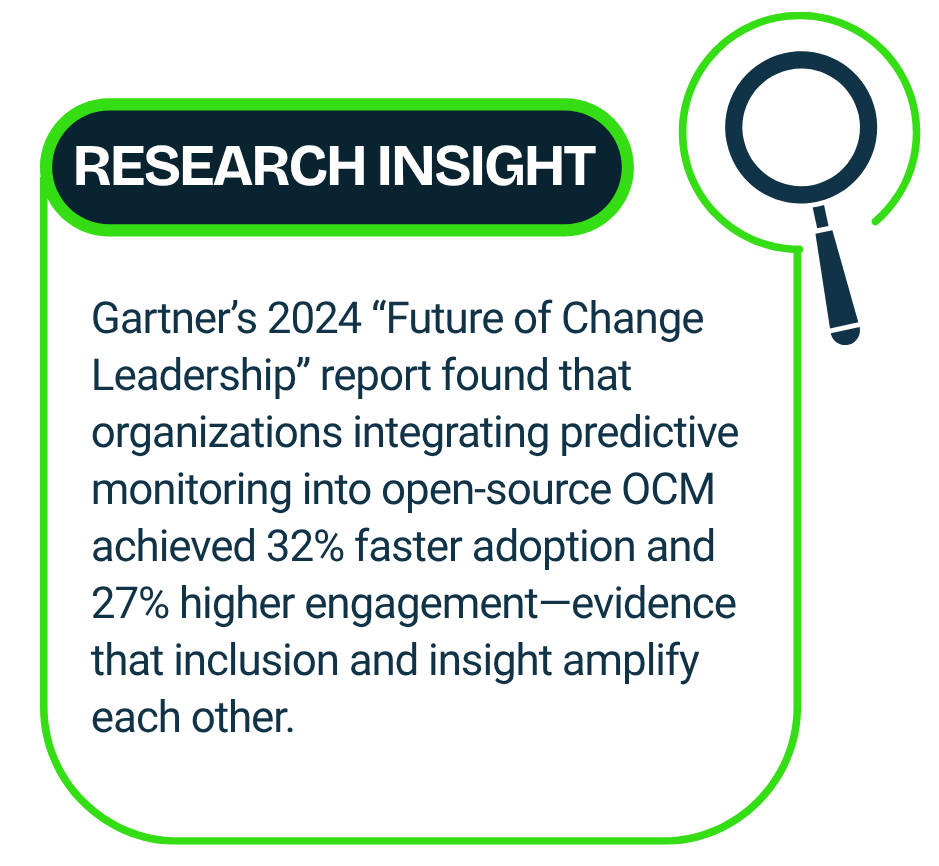 Governance models, too, are evolving. The traditional steering committee will become a signal-interpretation hub, where leaders don’t just review reports—they review trends. Predictive dashboards will highlight where leadership attention is most needed, allowing governance to move from retrospective control to real-time enablement.
Governance models, too, are evolving. The traditional steering committee will become a signal-interpretation hub, where leaders don’t just review reports—they review trends. Predictive dashboards will highlight where leadership attention is most needed, allowing governance to move from retrospective control to real-time enablement.
PMOs will shift from tracking milestones to tracking resilience indicators—confidence stability, decision velocity, and stakeholder sentiment—quantifiable signals of whether change is thriving or stalling.
For organizations seeking to move beyond static frameworks and build continuous adaptability, the journey begins with visibility—turning intuition into intelligence.
Request a TrueProject demo →see how predictive intelligence transforms change management into foresight, helping your organization sustain adaptability, alignment, and measurable results across every initiative.
Conclusion: How Predictive Intelligence Makes Change Measurable and Sustainable
Change success no longer depends on communication volume or stakeholder enthusiasm—it depends on insight. The organizations that will lead in the next decade are those that see change not as disruption, but as data.
Predictive intelligence redefines how change is managed, turning human intuition into evidence-based governance. It surfaces early-warning signals, decodes sentiment drift, and provides leaders with a playbook for proactive intervention—before performance dips or engagement erodes.
With this intelligence layer in place, change stops being reactive firefighting and becomes a disciplined rhythm of sensing, deciding, and improving.
That’s where TrueProject fits: as the predictive intelligence layer that strengthens transformation across every portfolio and project. It helps leaders act early, govern smartly, and deliver with confidence. By translating real-time project and behavioral data into foresight, TrueProject empowers organizations to anticipate resistance, sustain engagement, and drive measurable transformation. It turns change into a competitive advantage—one where readiness, resilience, and results move in sync.
FAQs: Organizational Change Management
1) What is Organizational Change Management (OCM)?
Organizational Change Management is a structured approach that ensures smooth transitions during strategic transformations. It focuses on aligning people, processes, and culture to achieve lasting adoption of new systems or behaviors.
2) Why is Organizational Change Management important for business success?
Effective OCM prevents disruption, accelerates adoption, and strengthens employee confidence during transformation. According to McKinsey (2024), organizations with strong change management practices are 3.5 times more likely to outperform peers on project outcomes.
3) How does predictive intelligence improve change management?
Predictive intelligence provides early visibility into resistance, engagement, and sentiment patterns. It allows leaders to anticipate issues before they escalate—enabling data-driven interventions that keep change on track.
4) What are the biggest challenges in Organizational Change Management?
Common challenges include cultural resistance, leadership misalignment, information fatigue, and lack of measurement. Predictive analytics addresses these by surfacing signals of misalignment and guiding targeted action.
5) How can organizations measure the success of their change initiatives?
Key metrics include adoption rate, engagement sentiment, decision velocity, and confidence stability. Predictive systems like TrueProject make these metrics visible, verifiable, and actionable in real time.






